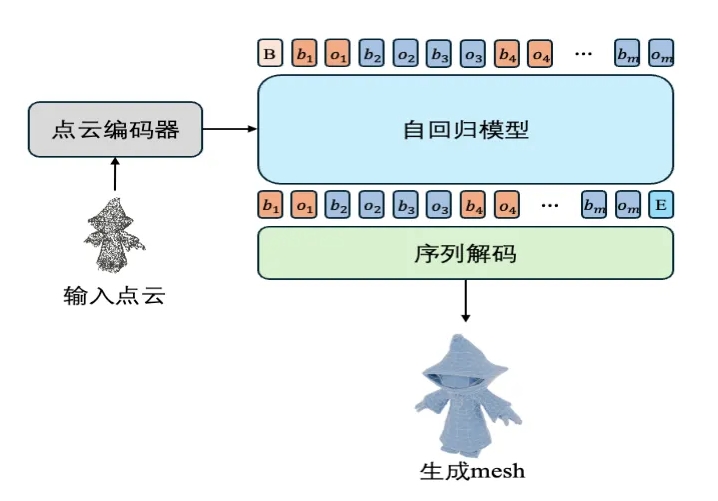On July 7, the Tencent HuanYuan 3D team announced the launch of the industry's first artistic-level 3D generation large model, Hunyuan3D-PolyGen. By using self-developed high-compression representation BPT technology and a self-regressive mesh generation framework, it achieves accurate generation of complex geometric models with tens of thousands of faces. The model has broken through core pain points in 3D asset generation such as poor topology quality, excessive face count, and difficulty in post-editing, improving artists' modeling efficiency by over 70%. The relevant capabilities have been launched on the Tencent HuanYuan 3D AI creation engine and integrated into multiple game pipelines.
Although traditional 3D generation algorithms can quickly build geometric models, the generated meshes often have an excessively high number of faces (often tens of thousands) and messy topology, resulting in insufficient aesthetics and difficulty in direct application to game development. Tencent HuanYuan 3D-PolyGen adopts a three-step framework: "mesh serialization - self-regressive modeling - sequence decoding," converting mesh vertices and face patches into discrete token sequences for spatial reasoning. Combined with the self-developed BPT (Blocked and Patchified Tokenization) high-compression representation technology, the number of tokens per face is compressed by 74%, enabling stable generation of complex models with more than 20,000 faces, with detail expression comparable to that of professional artists' manual work.

To address the issue of low stability in self-regressive generation, the research team introduced a reinforcement learning training framework. By designing "stable generation rewards" and "artistic standard rewards," the probability of the model generating "high-quality results" was increased by more than 40%. Experimental data shows that compared to industry SOTA methods, the topology neatness of models generated by Hunyuan3D-PolyGen improved by 35%, and the rate of detail loss decreased by 60%. Additionally, it supports flexible switching between three-sided and four-sided faces, meeting the needs of different professional pipelines.
Currently, this technology has been applied in multiple games within Tencent. For example, in an UGC game platform, artists can generate 3D assets that meet professional standards with one click via the AI creation engine, reducing modeling time from an average of 8 hours to 2.5 hours, and increasing asset reusability by 50%. A project team working on an open-world game reported that after introducing Hunyuan3D-PolyGen, the iteration cycle for scene props was compressed by 60%, and the generated models could be directly integrated into subsequent processes such as skeleton binding and UV unfolding, completely breaking the vicious cycle of "AI generation - manual remaking."
Starting today, developers can log in to 3d.hunyuan.tencent.com to experience the artistic-level 3D generation service and jointly drive the industry into a new stage of "AI-driven content industrialization."
